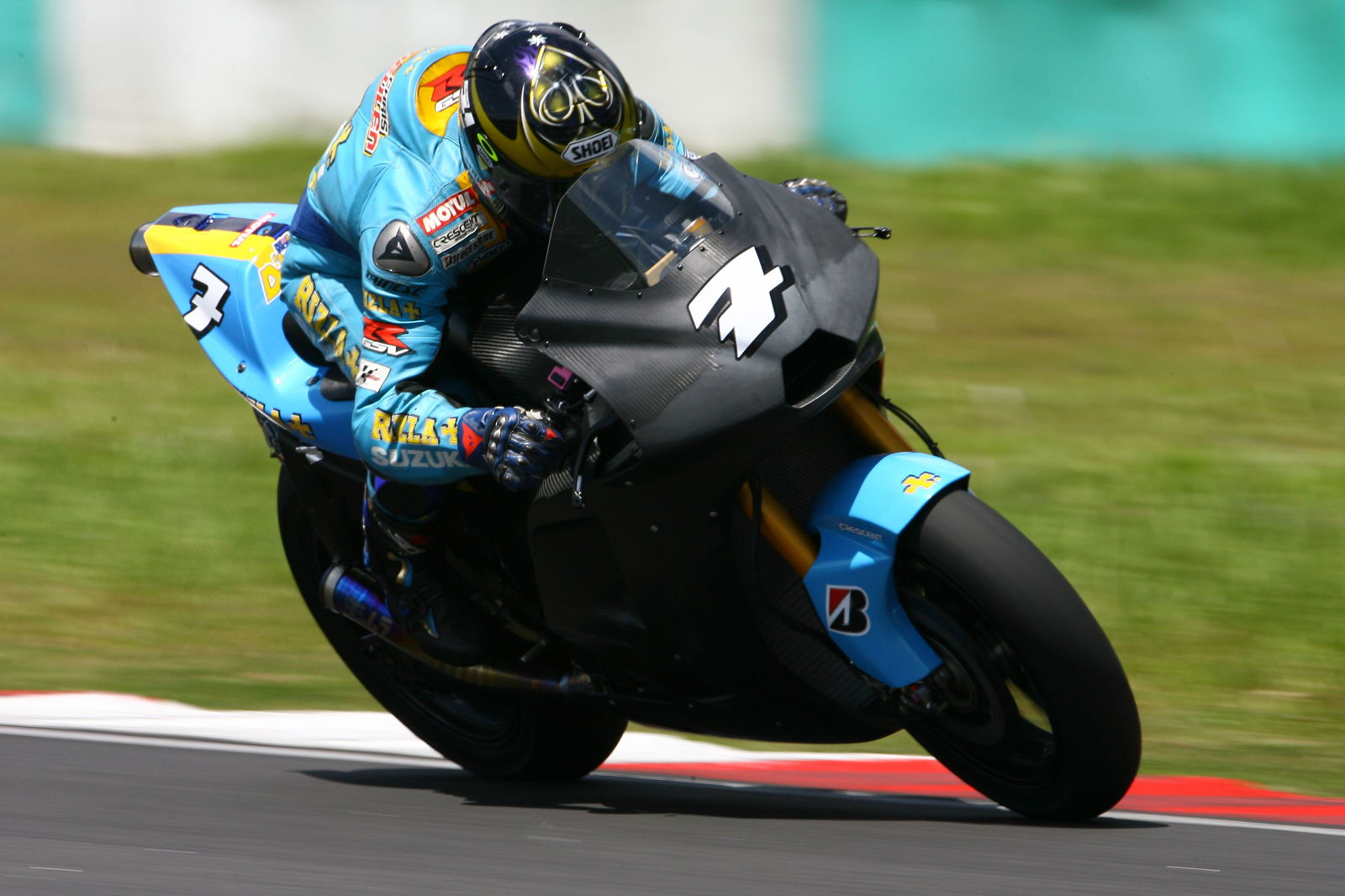Kawasaki tests screamer, talks pneumatic.
By Peter McLaren
The screamer's distinctive high-pitched engine note, similar to an F1 car and present during the early years of the four-stroke MotoGP class, stood out clearly from the rougher sounding 'big bang' engines, favoured in recent seasons due to improved handling characteristics.

By Peter McLaren
The screamer's distinctive high-pitched engine note, similar to an F1 car and present during the early years of the four-stroke MotoGP class, stood out clearly from the rougher sounding 'big bang' engines, favoured in recent seasons due to improved handling characteristics.
"Yes, Serizawa is running a screamer engine," Kawasaki communications director Ian Wheeler told Crash.net. "It's more of a test bed for some ideas that we've got. Jacque will be using it later today as well, but we've no plans for John [Hopkins] and Anthony [West] to try it here. They'll stick with the big bang engine. The test riders are generally trying out concepts that may or may not be used by the race riders in the future."
Jacque duly gave the screamer engine its second outing during the afternoon session, with 'positive results'. Both test riders will continue evaluation of the bike during the second Sepang test in early February.
Meanwhile, at a time when Honda is struggling to extract performance from its new-for-2008 pneumatic-valve engine - and Yamaha is throwing its weight back behind a gas-operated valve system of its own - Wheeler reflected on Team Green's experiences with the technology which, like Suzuki, Kawasaki has used since the start of 2007.
"We've had no real problems with our pneumatic-valve engine," he said. "It was developed in-house with the aid of a third party. Rather than taking an F1 engine and trying to make it fit a motorcycle, we took the concept of a pneumatic-valve engine and designed it from the ground up specifically for a MotoGP bike. Maybe that's why it's worked so well for us."
In terms of the benefits, Wheeler explained that a higher rev ceiling - the most regularly quoted advantage - is far from the only improvement.
"The benefits aren't just more revs - you could probably get away with the rev limit available from a standard valve system - but the cylinder head is also lighter and that lowers the centre of gravity," he said. "It's also smaller, so it allows for the position of the engine to be moved around more inside the frame."
"At the end of last year we were one of the fastest bikes after the Ducatis, and some more horsepower has been found over the winter," Wheeler continued. "We're also working on producing more linear torque and improving the engine braking."
When testing the latest version of Honda's pneumatic powerplant on day two at Sepang, Nicky Hayden was forced to pit regularly to recharge the system, but the refined Kawasaki unit is more self sufficient.
"There's quite a lot of margin in terms of how long we can run," said Wheeler, "but as a precaution we usually start with a full gas bottle after every long run."
Hopkins left Sepang in a fighting fifth position on the big bang ZX-RR, with team-mate West 15th after a difficult test.
Kawasaki will run its full 2008 livery for the first time during testing at West's home circuit of Phillip Island, from January 30.


